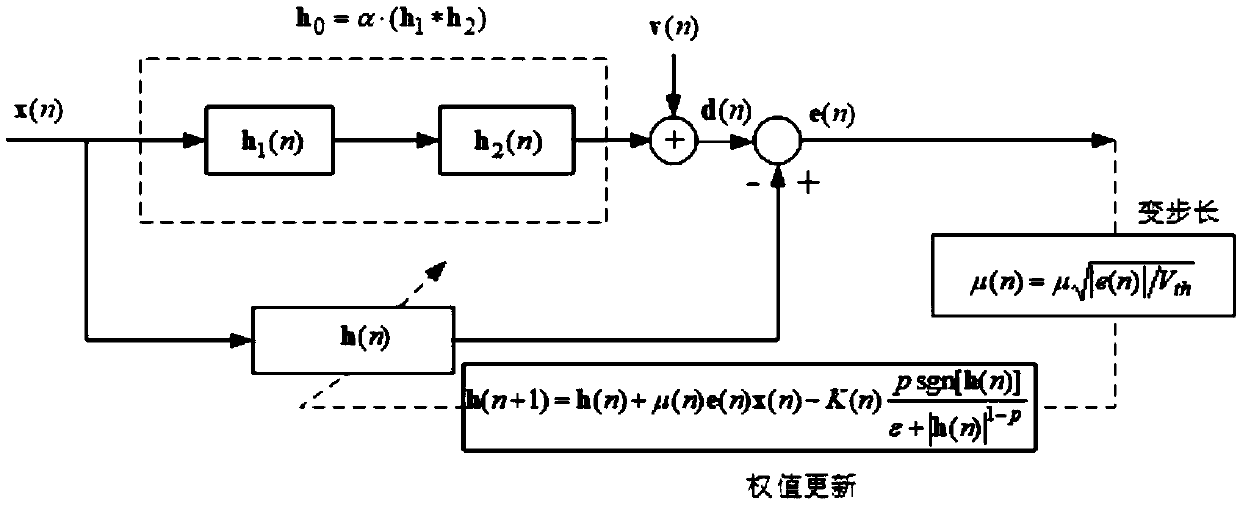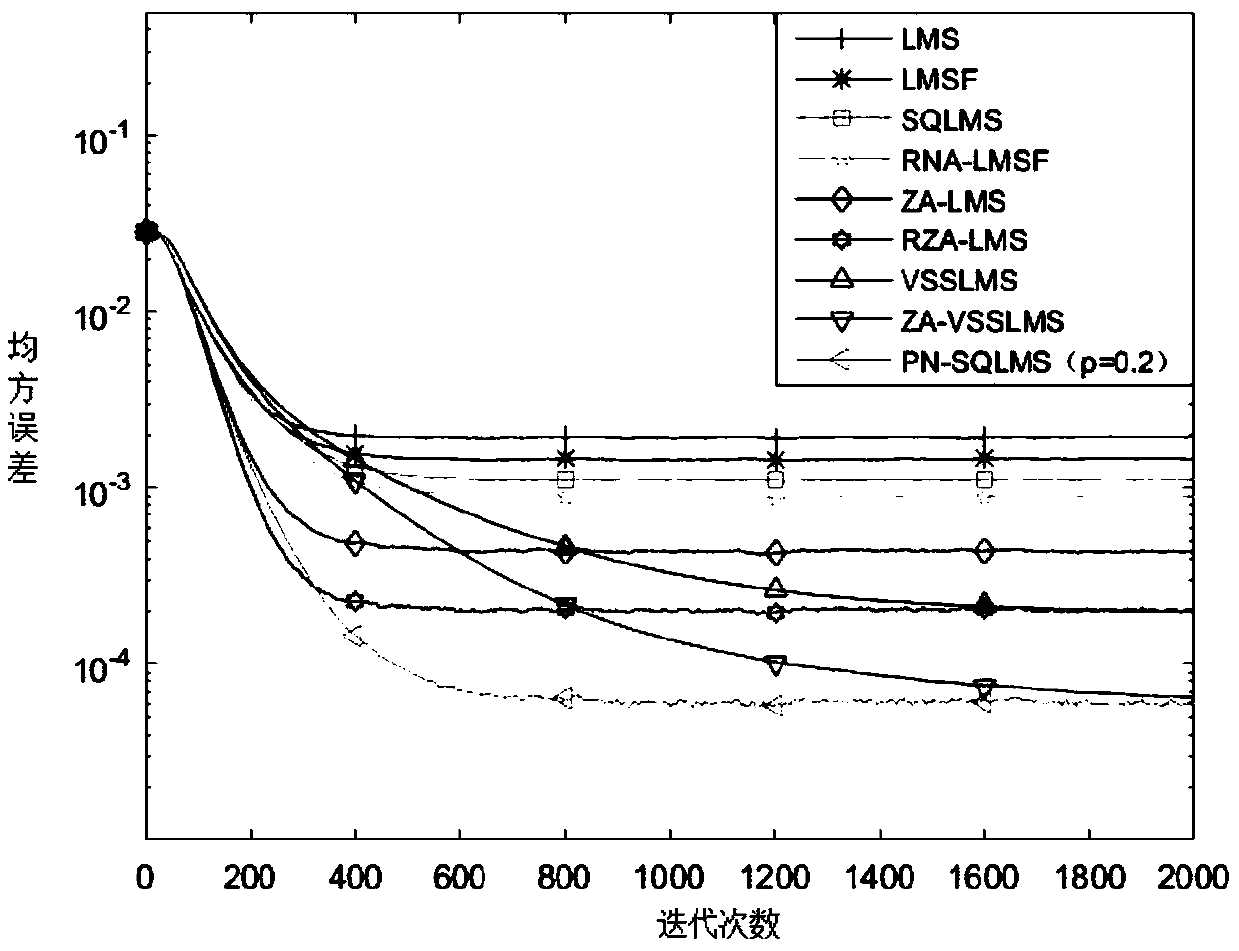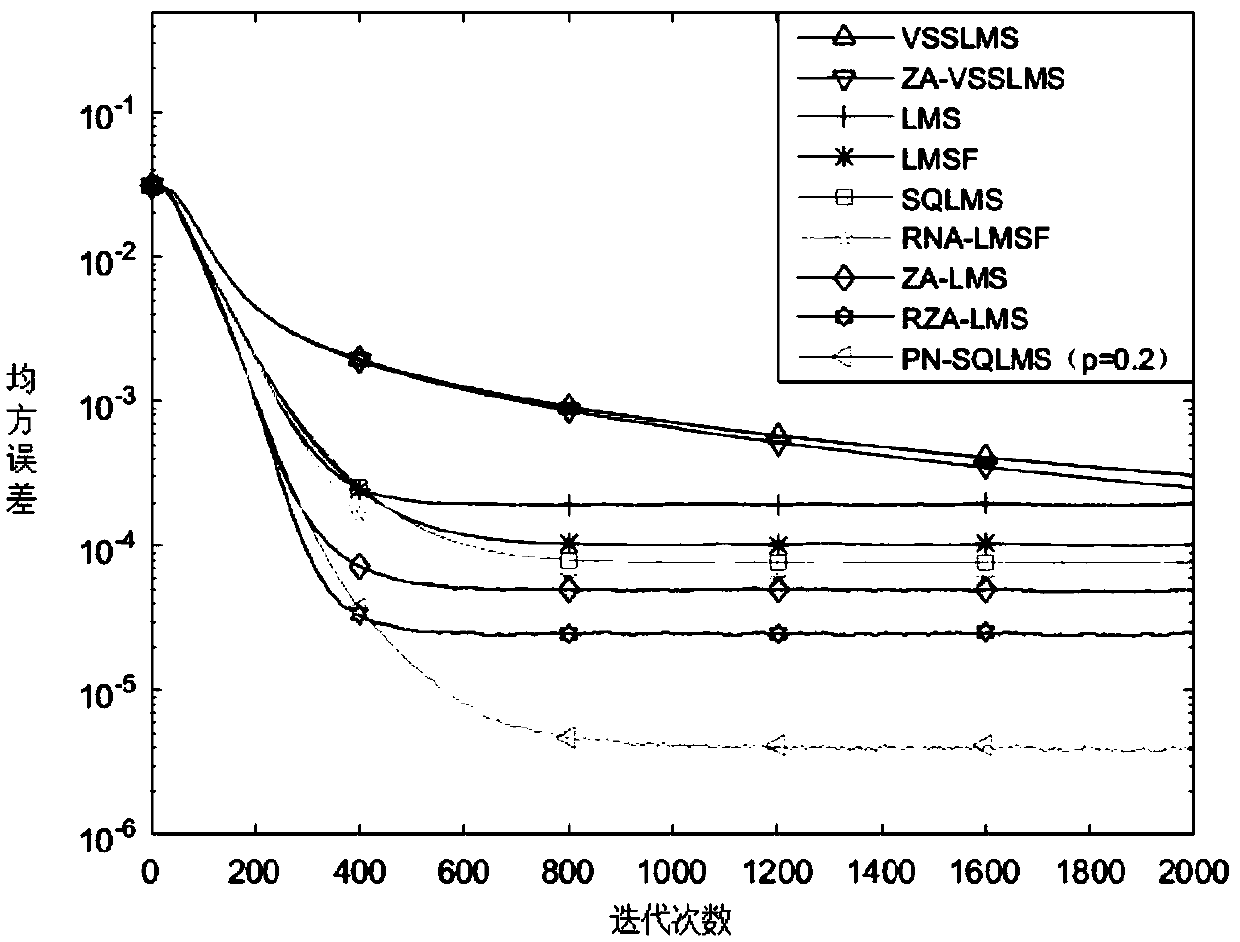A sparse system identification method of variable step size lp norm LMS algorithm
An LMS algorithm and system identification technology, applied in the field of sparse system identification, can solve the problems of ineffective use of sparse structural information, low efficiency of parameter estimation performance, additional noise and sensitivity to signal-to-noise ratio, etc., to speed up the convergence speed and track ability The effect of strong and fast convergence speed
- Summary
- Abstract
- Description
- Claims
- Application Information
AI Technical Summary
Problems solved by technology
Method used
Image
Examples
Embodiment Construction
[0047] The following will clearly and completely describe the technical solutions in the embodiments of the present invention with reference to the accompanying drawings in the embodiments of the present invention. Obviously, the described embodiments are only some of the embodiments of the present invention, not all of them. Based on the embodiments of the present invention, all other embodiments obtained by persons of ordinary skill in the art without making creative efforts belong to the protection scope of the present invention.
[0048] The present invention proposes a variable step length l p Sparse System Identification Method for Norm LMS Algorithm. This method introduces the square root of the error function to adjust the step size on the basis of a fixed step size μ, and uses the amplification effect of the square root on decimals (less than 1) to amplify the error nonlinearly. When the error is large, the dynamic step size can Provide a larger value to promote the ...
PUM
 Login to View More
Login to View More Abstract
Description
Claims
Application Information
 Login to View More
Login to View More - R&D
- Intellectual Property
- Life Sciences
- Materials
- Tech Scout
- Unparalleled Data Quality
- Higher Quality Content
- 60% Fewer Hallucinations
Browse by: Latest US Patents, China's latest patents, Technical Efficacy Thesaurus, Application Domain, Technology Topic, Popular Technical Reports.
© 2025 PatSnap. All rights reserved.Legal|Privacy policy|Modern Slavery Act Transparency Statement|Sitemap|About US| Contact US: help@patsnap.com



